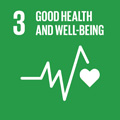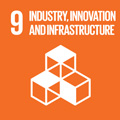- Docente: Emanuele Domenico Giordano
- Credits: 9
- SSD: BIO/10
- Language: English
- Moduli: Emanuele Domenico Giordano (Modulo 1) Simone Furini (Modulo 2)
- Teaching Mode: Traditional lectures (Modulo 1) Traditional lectures (Modulo 2)
- Campus: Cesena
- Corso: Second cycle degree programme (LM) in Biomedical Engineering (cod. 9266)
-
from Sep 18, 2024 to Dec 18, 2024
-
from Sep 18, 2024 to Dec 18, 2024
Learning outcomes
Biological engineering encompasses engineering theories and practices applied to biological science. A basic goal of this approach is to design technology that operates in harmony with the biology of living systems. Attending this course Students will learn how to use theoretical and practical tools useful for the design and fabrication of biosynthetic parts, devices and systems, and for the analysis of experimental data at the molecular and cellular level. At the end of the course, Students should be able to: - design genetic circuits based on a standard modular approach, - know the general specifications of suitable cells and biomaterials and applicable tissue engineering protocols in dedicated devices (bioreactor systems); - experimentally evaluate the functionality of engineered molecular and cellular constructs; -formally describe and predict the dynamics of engineered molecular and cellular constructs by using computational modeling. -respect the regulatory framework governing experimental and clinical use thereof, - knows bioinformatics techniques to analyze nucleotide sequencing experiments.
Course contents
SYNTHETIC BIOLOGY & TISSUE ENGINEERING [MODULE 1]
Unconventional applications for nucleic acids, e.g. a) DNA nanodevices; b) DNA computing; c) autonomous molecular computers for logical control of gene expression.
What is synthetic biology?
The international Genetically Engineered Machine competition.
The Registry: a promoter and a terminator for transcription, a ribosome binding site (RBS) for translation.
Small regulatory RNAs.
The lab room and the equipment.
Safety is priority: Biological safety and disposal.
E. coli DNA: Chromosomes, plasmids and copy number.
Chemical solutions and agar plates.
BioBrick™ standard assembly and agarose gel electrophoretic analysis.
Preparation and transformation of E. coli cells.
Fluorimetry, fluorescence microscopy or flow cytometry to measure a fluorescent reporter?
The lac operon.
Rational design of modular circuits for gene transcription: a test of the bottom-up approach.
A synthetic post-transcriptional controller to explore the modular design of gene circuits.
Stem cells in tissue engineering (TE).
TE scaffolds: chemical, physical and biological properties of natural and synthetic biomaterials of interest for the aim; scaffold fabrication methods; bioactive substance delivery; cell/biomaterial interactions (biocompatibility e differentiation assessment).
TE bioreactor systems: cell culture in bioreactors for TE; examples/applications.
Technologies for DNA sequencing
Mapping algorithms for second and third generation sequencing experiments
Bioinformatic pipelins for for variant calling
Analyses of RNA sequencing experiments
Description of chemical reactions by mathematical models based on the law of mass action
Modelling of the synthetic circuits by Markov chains
Deterministic models of gene regulatory networks
Stochastic models of gene regulatory networks
Stochastic simulations of synthetic circuits with the Gillespie's algorithm
Readings/Bibliography
Slides from classes will be available.
Current literature will be circulated in class.
Teaching methods
Traditional lectures in class, and practical activity in the lab for small students' groups attendance.
Assessment methods
The exam will be a written test (multiple choice questions, open questions and calculations), intended to restitute contents presented in class. The task must be completed in a maximum of 90'.
An organic vision of the topics addressed in class, the presence of a critical sense, the possession of clarity and expressive precision and specific language will be evaluated with marks of excellence.
Having studied but uncritically expressing the contents, communicating them in a non-specialist form will lead to proportionally less remunerative scores.
You do not pass the exam in case of learning gaps.
Teaching tools
Mol Cell Engn Lab "Silvio Cavalcanti" #3014
Office hours
See the website of Emanuele Domenico Giordano
See the website of Simone Furini
SDGs


This teaching activity contributes to the achievement of the Sustainable Development Goals of the UN 2030 Agenda.
